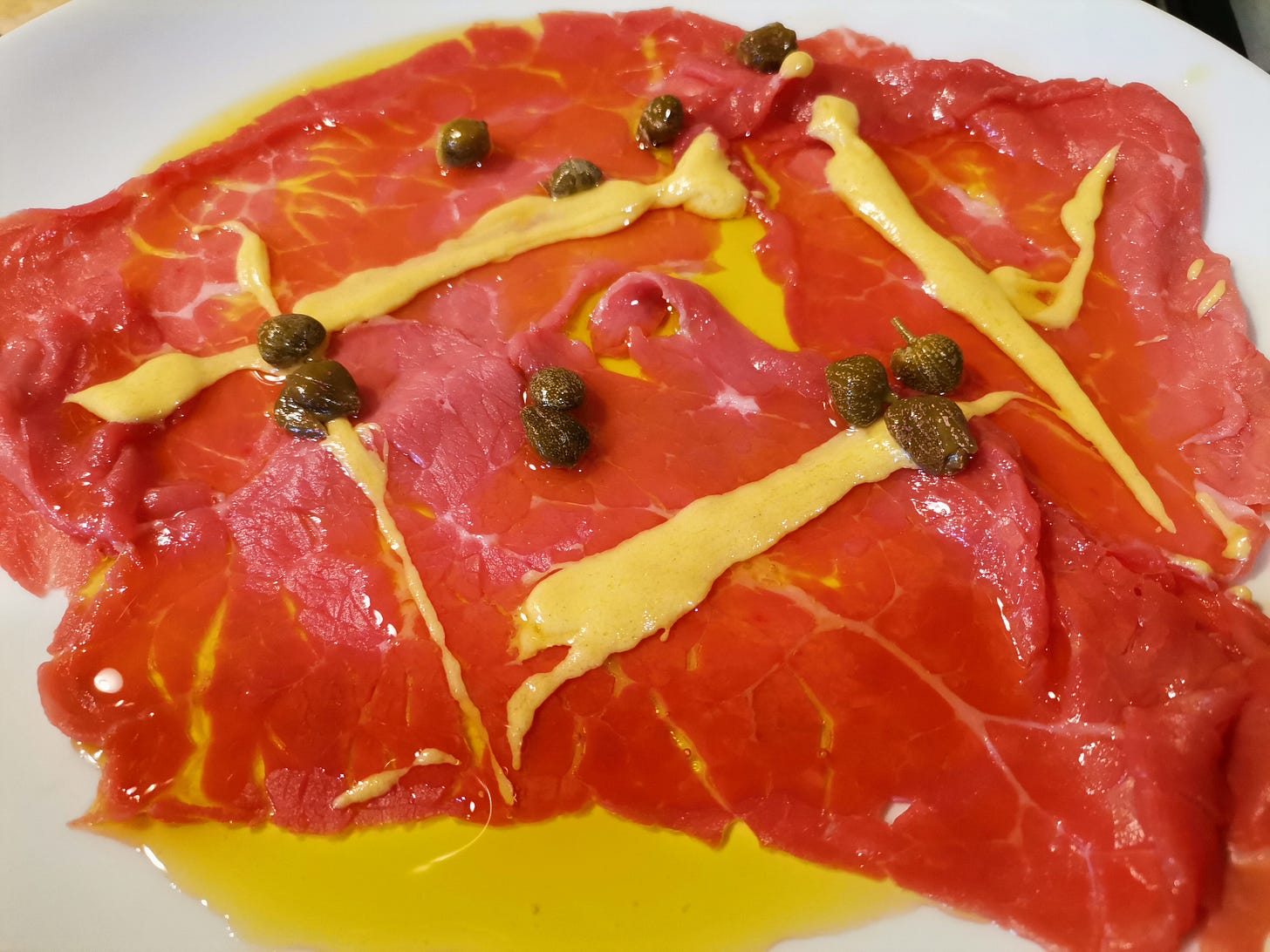Becoming a Tuscan Cook
Cookbook Junkie. Starting from zero, building up a Tuscan recipe collection. There are no "Italian recipes" instead there are regional recipes.
Welcome to my sixth monthly post of my culinary memoir-
Simply Divina: Becoming Italian One Recipe At A Time.
Thank you for subscribing, I appreciate the love. When you become a paying subscriber, you have access to:
all the archives
Markets of Italy, 12 guides to 12 cities and their markets ( on Thatch app)
my ebook, Secrets From My Tuscan Kitchen.
Cook along with me and become a little more Italian every day!
Culinary Reality Check
When I arrived in Florence in 1984, I had no idea about regional Italian cooking. People speak of Italian cuisine, but many recipes only exist in the region they were created in, sometimes only in that city.
In San Francisco, I didn’t hang out often in North Beach, I tended to eat Chinese or Sushi more than Italian food. I would go to Mario’s Bohemian Cigar Shop; it started as a cigar shop, and then they added some panini. My favorite was their eggplant focaccia panino. Most “red sauce” style places served too much food, and the portions were huge. Now that I have traveled all over Italy, I can trace back where that cooking style originated. Most Italian restaurants in North Beach were owned by immigrants who had come over long ago and were recreating their regional recipes with the ingredients they could find in America; hence, the recipes were altered and adapted. Most of the restaurants were in southern Italy, Naples, and Sicily.
Don’t expect to find spaghetti and meatballs in Italy. I finally saw a dish in Bari.
Abruzzo also has a dish with really tiny meatballs.
In Naples, you might find meatballs in your lasagna at Carnevale.
Have you seen the movie “Big Night”? It’s a perfect example of how Italian food was perceived. Over the years, restaurant owners adapted to how their clients wanted to eat rather than eating Italian-style. Take into consideration that when they arrived in the USA, they had to recreate their recipes with local ingredients, which were not the same as the ones they were used to. Italians use a plum tomato for sauce ( San Marzano being one of the best), and instead, they had to adapt to using a salad tomato, which is much more watery. I remember making my first Italian tomato sauce back in the 60s, and it had a can of stewed tomatoes, a can of tomato sauce, and a can of tomato paste. Now we have access to ingredients from Italy, we need to change the recipes back to their simple original versions. Less is more.
My first exposure to modern Italian regional food was at Prego restaurant on Union Street in San Francisco. It wasn’t a family-style red sauce place with huge portions. The owner, Larry Mindel, traveled to Italy and brought back recipes from Italy—Rome, Milano, Venice and Florence-style recipes.
Prego restaurant became my hangout. It served a lovely light carpaccio, similar to that at Harry’s Bar in Venice, where it was created by Arrigo Cipriani: paper—thin slices of raw beef with a Jackson Pollack-style drizzle of mustard sauce.
When I brought Andrea to San Francisco for the first time, I took him to Prego for dinner. As I was explaining the menu to him, our waiter interrupted us. It turns out he was Andrea’s friend from Florence. Small world. They did hire a lot of Italians. Manuela, one of my friends from Florence, also worked there briefly.
When I arrived in Florence, everything started to make sense. I realized I had to learn Florentine cuisine from scratch to be able to teach. My cookbook is called Secrets From My Tuscan Kitchen, but really, it should be Secrets From My Florentine Kitchen. When you visit Tuscany, you realize how varied the recipes are in the various provinces in Tuscany.
To learn about the cuisine, I took classes and bought books and magazines in Italian. Most of my Italian cookbooks, except Marcella Hazan’s books, were Italian American recipes.
Even today, I have had American chefs taste recipes here, thinking that we use chicken broth to enhance flavor, but the local extra virgin olive oil gives that beautiful depth of flavor.
Let me share some books that have helped me be a better cook.
This series was sold at the newsstand in Italy as a supplement to a newspaper. A friend ordered them for me in Rome, and I went down with an empty suitcase to bring them back to Florence. They were not available in Tuscany. I often get emails asking for help finding someone’s nonna’s recipes. This is a great base for me to do research.
Being able to read and speak Italian helped me in learning by both reading and talking to people. Asking questions to dig deeper into this new world of cooking.








